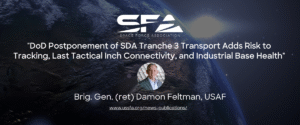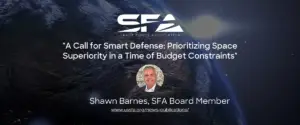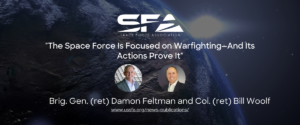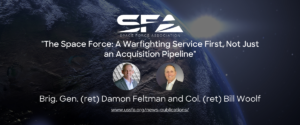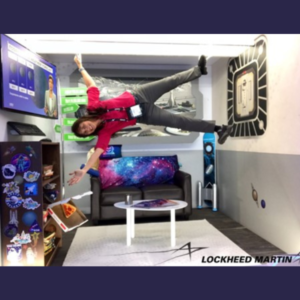The average American knows too little about the Space Force. That’s a problem. It’s just one of many, but it should be at the top of the list for the young service.
As the 20 December second birthday of the separate Space Force rapidly approaches, many citizens still don’t know it exists, assume it was a publicity stunt, confuse it with a parody, or misjudge it as frivolous.
An informed citizenry is vital to all aspects of national spacepower. Spacepower is a tapestry of military, intelligence, civil, and commercial activities. Each requires the participation and support of individuals. National influence in space and benefits from its development grow when people choose to invest in public and private ventures, compete for jobs in the industry, or advocate for policies that weave the many elements tighter together.
It takes concerted effort to convert opponents into advocates. More of the country needs to join the chorus calling for a new era of national spacepower and show support to Guardians in the same way they do Soldiers, Sailors, Marines, and Airmen — with a gratitude founded on understanding, respect, and admiration.
It may be overdue, but the time is still ripe to make this a Service-wide priority. The Space Force is still a novelty, NASA is as popular as ever, commercial companies make headlines weekly, and competitors have teed up the conversation with a string of provocative military space activities worthy of discussion.
Progress
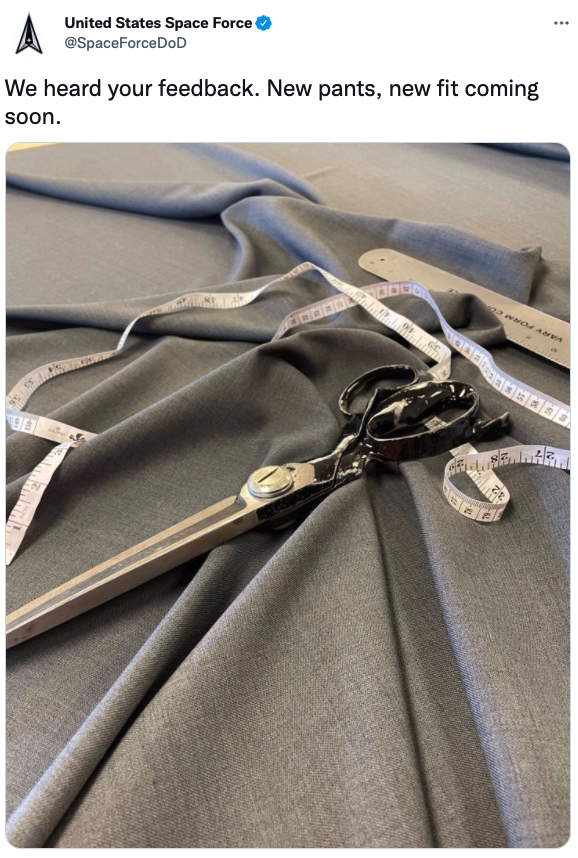
The Service has not been idle, but results have been mixed at best. General Raymond hit a homerun when he reclaimed the aphorism “space is hard” from his sitcom counterpart by contextualizing the statement in a recruiting commercial. On the flip side, they drew unnecessary criticism for something as simple as not visiting a tailor before unveiling the dress uniform meant to distinguish Guardians from Airmen.
Judging from nation-wide interactions on social media and local conversations near Space Force Bases, the general perception seems to be that the Space Force has been quiet enough to be either a non-issue; an example of government excess; or a new target for anti-government, flat-earth, and self-styled comedic trolls.
Challenges
Explaining the necessity, role, and potential of a Space Force is important, but by no means easy.
Space is hard to explain. Things in orbit don’t behave the way things do in our day to day experience and they are too far away for us to see clearly. Since the United States remains in the middle of the pack for reading, math, and science aptitude, educators, policy makers, and generals have to assume little to no understanding of space when they speak. They tend to use obtuse metaphors or lecture on elementary concepts before they can address their point.
The Space Force continues to be the poster child for a “resource constrained” government office. By some reports only 60% of headquarters space force (HQSF) staff billets are filled. With money and manpower shortages and the expense of starting up independent institutions, it’s understandable that public affairs likely takes a back seat.
Perhaps the biggest constraint on the conversation between Guardians and the American public is secrecy. The Space Force inherits a tradition of over classification and compartmentalization that has confounded even the most senior officers. In short, anything that could disclose a capability or be interpreted as escalatory either isn’t discussed, is made vague instead of specific, or is obfuscated by euphemisms like “protect and defend.” These policies, though well-intended decades ago, limit what the Service can say about the threats that necessitate its existence and the capabilities it can provide.
Whatever the causes, the collective silence undermines the Space Force’s ability to deter adversaries, build public confidence, recruit and retain talent, and advocate for future roles and capabilities. In summary, the low level of public awareness weakens national spacepower during a period of pivotal competition that the National Space Priorities Framework labels “a historic moment.”
Solutions
As resources become available and policies shift, there may be some grand ways to address these problems. In the meantime, here are some no- and low-cost actions the Space Force could take right now to reach Americans.
1. Prioritize Strategic Communications.
Assign strategic communications a designated priority level. Clear direction from headquarters on the importance of messaging relative to other priorities like continuity of mission and building institutions will allow commanders to reallocate their limited resources accordingly. If there are only two officers in public affairs (PA), allocating even one more means a dramatic 50% increase in capacity.
A refined and better resourced strategic communications plan could have substantial effects. More interactions with the media could help tell the national defense space story better in news, movies, and television. Making even fictional depictions of space more realistic will reduce misunderstandings of the Service and domain. Other efforts might include improved visualizations for threat, policy, and capability messages and interactive digital platforms to expose diverse audiences to those issues.
2. Establish a Space Force Demo Team
Military branches boast a variety of public performances to inspire and educate the American people and boost the morale of service members. Bands, fleet weeks, and airshows are opportunities for civilians to see, experience, learn about, and connect to their military. Unfortunately, Space Force capabilities don’t show well curb-side.
Perhaps the most dramatic examples of defense outreach are aerial demo teams. The Thunderbirds, Blue Angels, and Golden Knights are an experiential and often emotive way of promoting military service, showcasing capability, and educating diverse audiences. While satellites and rockets can’t be flown visibly over Independence Day parades, there are innovative ways to achieve similar results that are worthy of a self-proclaimed “digital service.”
Establish a drone demo team with world class capability and scale. Large drone displays have become common yet remain awe-inspiring. Like flying demo teams they are mobile and have weather limitations, but offer many other advantages. Drone displays can be conveniently replicated or divided to perform multiple shows at once, pose almost no risk to life or property, and are much more affordable – jet shows are estimated in the tens of millions while large drone shows can be quoted for tens and hundreds of thousands.
The ability of drone formations to pseudo-holographically demonstrate space systems and concepts was dramatically proven by China last year. The combined civil/military achievements and ambitious goals of the China National Space Administration were the theme of a record-setting 3,051 drone display in Zhuhai in October 2020.

The Space Force could improve on this example with drone displays visible to tens of thousands. The shows would be synchronized to video, music, and a narrative accessible from all observers’ smart phones. The narrative and animations would feature systems, missions, domain fundamentals, and above all, the value of space to national security and prosperity.
The logical evolution of the capability would be to establish demo teams at most garrisons, capable of supporting local and regional events highlighting their own missions and also consolidate with other units for larger displays at national events. Though easily contracted, giving the mission to Guardians would create high morale career broadening opportunities and avenues for new relationships with interagency space partners like the Department of Transportation’s Federal Aviation Administration.
3. Make Guardians Expert Communicators
Who better to explain the role of the Space Force than a Guardian? Civilians always ask questions of their service members. Guardians should be as good at explaining their service as any peer, but have the added challenge of explaining space. Space is an operating environment that is foreign to most audiences.
Make public communication a core competency for all Guardians. Every Guardian should have the ability not just to practice, but to explain their mission to anyone. That skill should be taught at initial training and reinforced through every level of professional military education. This training should equip Guardians with a standard toolkit including engagement and advocacy skills, an evolving repertoire of talking points about their service, and a primer on communicating science and military topics to laypersons.
4. Make Guardians More Visible
As the force becomes more competent at representing itself, the next logical step is to expose them to the public more often. The Space Force is even more isolated than other services. The majority of the force is stationed in California, Colorado, Florida, and the District of Columbia, so most American communities don’t get to meet and learn from Guardians. Policies are needed to create new opportunities to counter that limitation.
Require uniform wear for all official travel. One Guardian recently pointed out that when traveling in uniform, each leg generated about five conversations with people who had no practical knowledge of the Space Force. Common questions included:
- “Is the Space Force really a thing?”
- “Do you work in space?”
- “I thought they were moving the Space Force to Alabama?”
- “Do you have Space Force bases or something?”
- “Why are we wasting money on space?”
- “Can I tell everyone I know that I met a Guardian?”
These engagements are priceless. Simply requiring Guardians to be conspicuous and professional when traveling would create a boom in engagement opportunities. Most major hubs are themselves far from centers of Space Force activity but also perfect venues for making Guardians visible to civilians from across the country.
Conclusion
The United States needs to know its Space Force better. Deliberate actions must be made to improve that understanding. Only then will the United States find the best role for its Space Force in advancing both security and prosperity.



